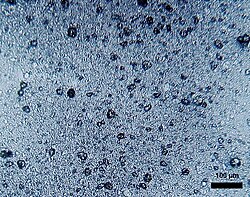
Microplastics (teeny tiny plastic particles) have been detected all around us in the environment, our food, even our organs (e.g., lungs, blood, brain, placentas). Wherever we look, they are found in our bodies, with a recent study finding them in our bones.
The big question is: are these microplastics having a harmful effect on us? The researchers, who reviewed 62 studies, found that yes, microplastics could be harming bone health a number of different ways. They may be weakening our bones, impairing the function of bone marrow stem cells, accelerate cell aging, and could be worsening metabolic bone diseases like osteoporosis.
Microplastics occur as plastic items degrade over time. We breathe microplastics in, eat them (in our food), and drink them in (in water and other liquids). We can't avoid them totally, but we can cut down the amount we are exposed to and ingest - for example, not drinking bottled water (a big source of microplastics), and reducing the amount of plastic furniture, synthetic fabric (e.g., polyester), and synthetic rugs and flooring (e.g., vinyl) in our homes. Also, avoid playing on synthetic turf in playing fields and parks.
From Science Daily: Scientists discover microplastics deep inside human bones
The production and use of over 400 million tons of plastic each year has polluted beaches, rivers, and even the deepest parts of the ocean, reaching depths of up to 11,000 meters. In addition to visible environmental impacts, plastic contributes to climate change. It is estimated that plastic production generates 1.8 billion tons of greenhouse gases per year. Scientific evidence also suggests that using plastic materials in everyday life has impacted human health.
A large number of plastic particles detach from curtains, furniture, clothing, and other plastic objects. These particles remain suspended in the air, dissolve in drinking water, adhere to food, and can be inhaled, ingested, or come into contact with people's skin. Consequently, scientists have found microplastics in blood, the brain, the placenta, breast milk, and human bones.
